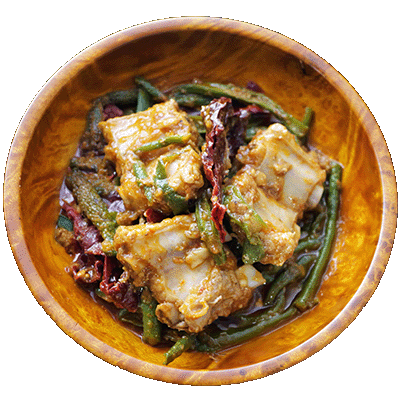Phaksha Ribs, a delectable dish from Bhutanese cuisine, features tender pork ribs cooked to perfection with a blend of spices and the signature heat of red chilies. This dish is characterized by its robust flavors and is often served with traditional Bhutanese red rice and a side of vegetables. The combination of savory and spicy elements makes Phaksha Ribs a must-try for anyone looking to experience the essence of Bhutanese culinary traditions.


